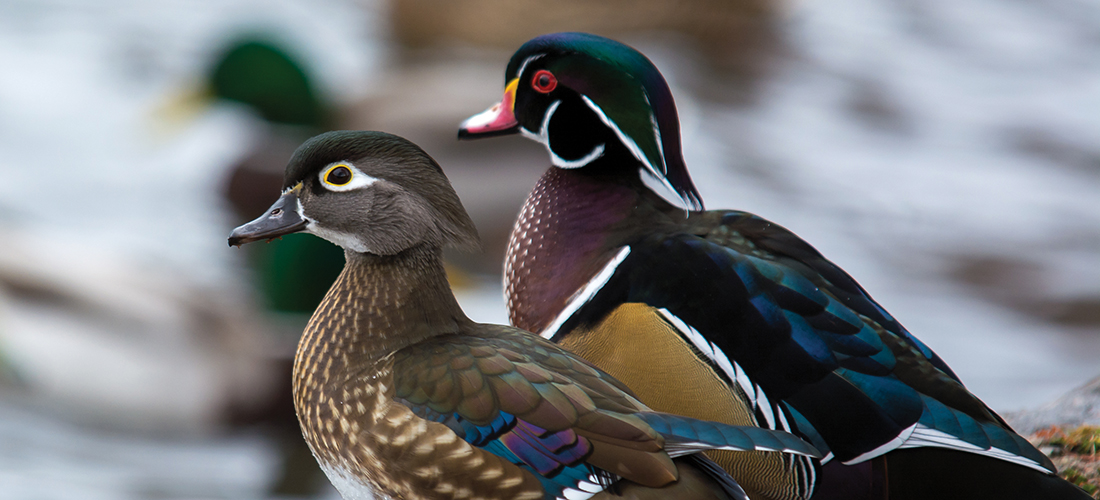
Babes in the Woods
Early spring is nesting time for wood ducks
By Susan Campbell
Love is in the air for the most beautiful of all the waterfowl: the wood duck. These lovely creatures begin courtship in January, and by the end of the month seek out suitable nesting sites. They are busy raising what is usually a very large family by early spring.
“Woodies” as they are affectionately known by waterfowl lovers, are found commonly in marshes, beaver swamps and along streams throughout most of North Carolina. Here in the middle of the state they are year-round residents, although the population swells in the winter to include birds from farther north. Nonresident birds tend to be very skittish and flush very quickly upon approach. Our local wood ducks can become very tame, especially in locations where they are being fed by people. On more than one occasion, I have approached individuals at Reservoir Park in Southern Pines, where they were feeding on corn with a variety of other ducks and geese.
Wood ducks are smaller and more slender than our familiar mallards. The hen is nondescript — grayish with white spotted flanks and white around the eye. The drake, on the other hand, is a patchwork of red, brown, yellow and green. He sports a drooping green crest and a bright red bill and eye. Don’t expect quacking. Wood ducks’ vocalizations are a series of squeals and whistles. In the air these ducks are fast fliers and remarkably maneuverable, threading their way through forested bottomlands, their preferred habitat.
This species of waterfowl spends most of its time foraging on aquatic vegetation and insects found in shallow bodies of water. But when it comes time to breed, they may be found up to a mile from water, searching for a suitable nesting site. They are unique in that they are the only ducks that nest in trees in our area. Hens will typically look for holes in dead or dying trees in which to lay their eggs. It is not unusual for them to lay a clutch of 20 eggs in a cavity over a hundred feet up in an old tree. At Weymouth Woods, wood ducks frequently use old pileated woodpecker holes that were, in turn, created initially by red-cockaded woodpeckers.
As uncanny as it sounds, the ducklings have no trouble whatsoever dropping to the ground when they are called by their mother soon after hatching. They will all then quickly walk downhill to the nearest body of water. Unsurprisingly, this is when they are most vulnerable, not only to ground predators such as foxes but also to being separated from their mother as they make their way around obstacles.
Of course, with natural snags being less common on the landscape, wood ducks have taken to using man-made housing. Many folks in the Sandhills and Piedmont have been successful at attracting woodies to their property with wood duck houses adjacent to wetlands. A box should be mounted on a pole and fitted with a baffle to keep predators such as raccoons and opposums from getting to the nest. It is also important to be aware that these ducks regularly produce two sets of young each year, so a box may contain a female on eggs any time from February through May. In addition, do not be surprised if the box is used by other birds during the course of the year. Screech-owls, great crested flycatchers and even bluebirds may take advantage of a duck box as well. PS
Susan would love to receive your wildlife sightings and photos. She can be contacted by email at susan@ncaves.com.





